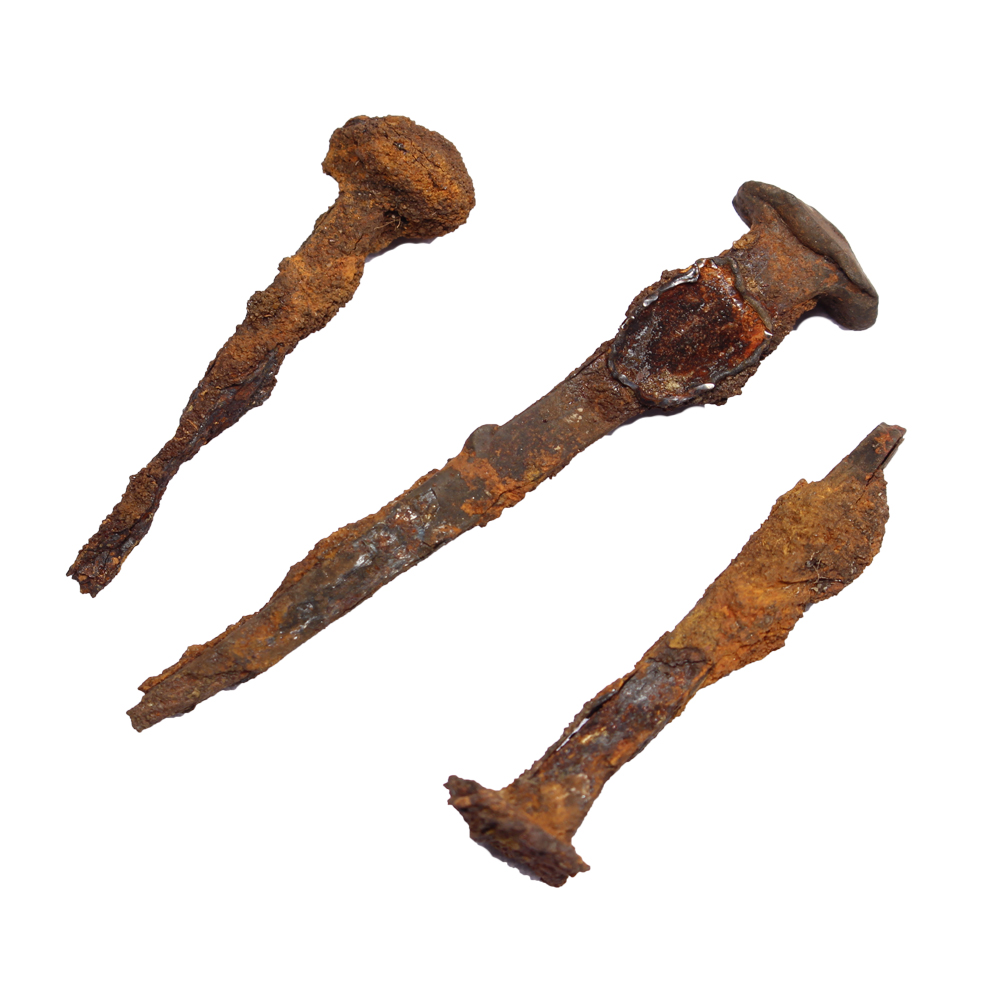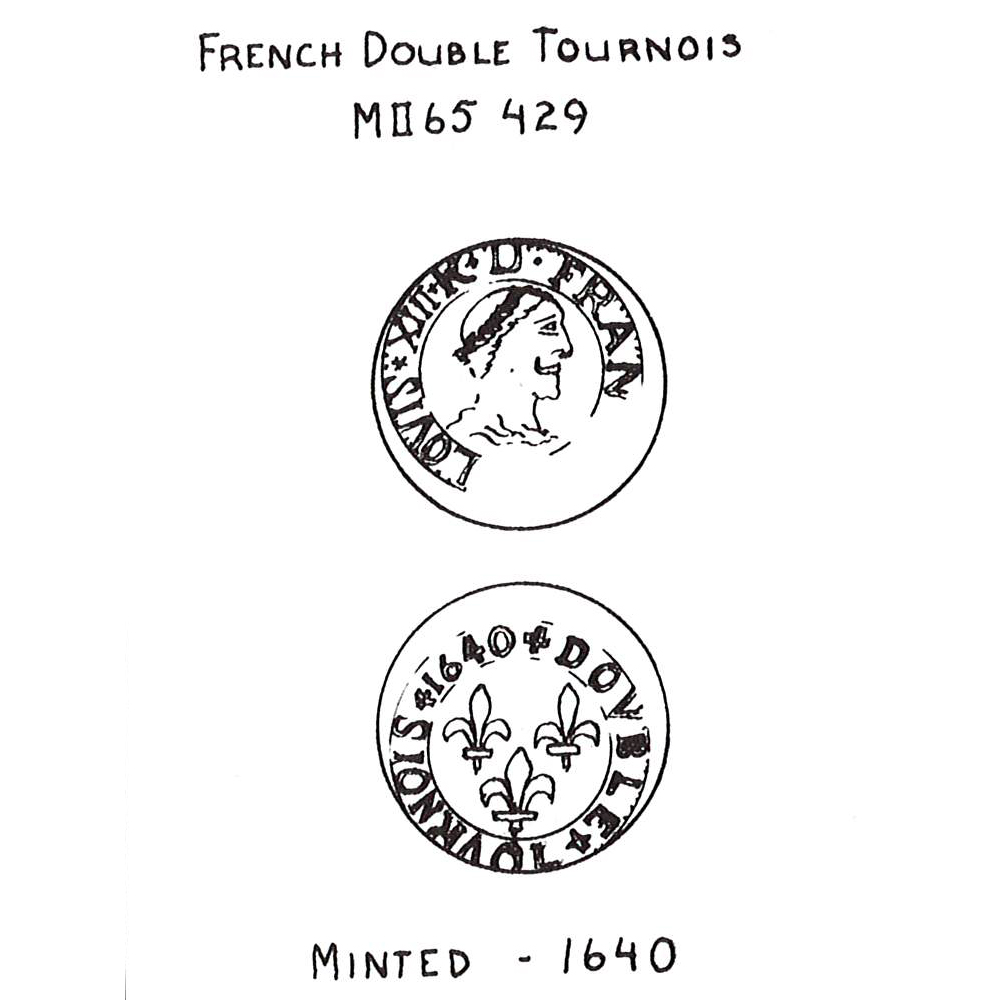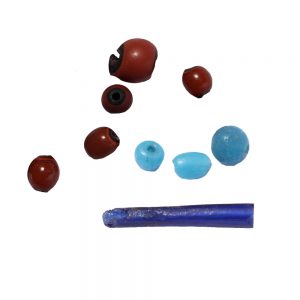Peter’s Findings: Material Culture
Among the recovered artifact assemblage from the excavations were hand-forged iron nails, spikes, and tacks. The same deposit contained various copper, brass, and bronze items as well as bronze nuggets from objects that had melted in the fire. Hardware items included sheet and bar strapping, hinges, a pintle, door locks likely brought from Sainte-Marie I, rings, chain (from near the well), kettle bales, and fasteners.

Of a total of 523 catalogued artifacts recovered during the 1965 excavations, 400 were nails or nail fragments.
Also found were two examples of European stone-ware, reddish pale brown in colour, with what may be a slight glaze on the interior surface along with fine crystal and blown bottle glass consistent with domestic and ecclesiastical activities ─ three types of glass were found including nine small fragments of a very fine clear crystal, the largest of which was a rim fragment one foot long by almost a half-inch wide with a rolled tubular rim, one piece of dark yellowish-green bottle glass with the beginnings of a multi-coloured patina on the inside, and five relatively large fragments of thick (up to quarter-inch) bluish-green bottle glass.
The 1965 Excavation (Closed captions available in EN and FR) – View this video with a transcript (EN)
Seven soldiers were likely among the French refugees who travelled across to Christian Island and naturally they, at least, would have been armed, possibly with harquebuses but perhaps also with more advanced weapons such as a snaphance, doglock, or perhaps even a flintlock. A gun flint was indeed found south of the charred building. The flint was of the French caramel coloured type and had been flaked and steeply retouched for this purpose. A gun worm was also found nearby; it was corkscrew-shaped and featured only one sharpened curl at the tapered bottom. These tools were attached to the end of a gun ramrod and were used for removing objects such as wadding or shot from the barrels.

A similar coin was found at Sainte Marie I and although French money of this sort had no exchange value in the heart of Wendake, it was, nevertheless, carried to and lost at the site.
One of the more significant finds was a small (three quarter inch diameter) copper coin called a “Double Tournois.” Indigenous pottery, one piece of shell wampum, and a number of glass trade beads were also recovered. The beads included red spherical (with black cores), red tubular, red oval faceted, as well as blue spherical and blue elliptical with flat ends beads.

These trade beads, made of glass share a story of some of the earliest interactions between European settlers and First Nations peoples.
Unfortunately, the recovered artifact assemblage from these excavations was lost when the school in which they were housed burned several years later.

